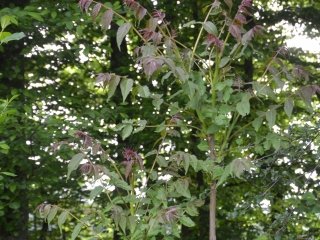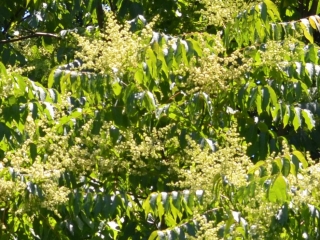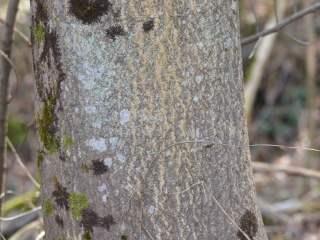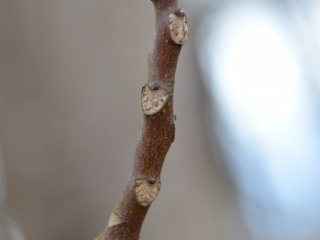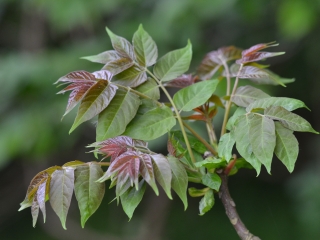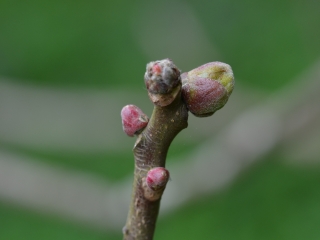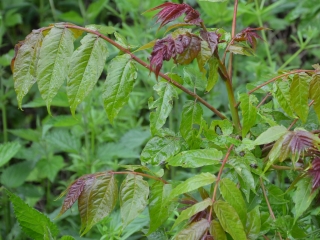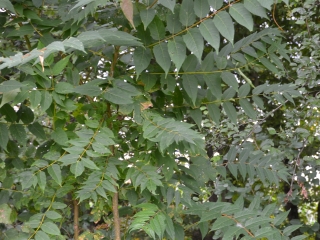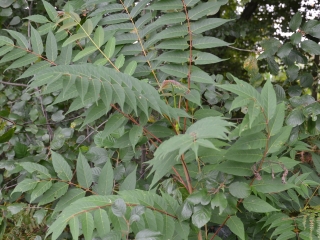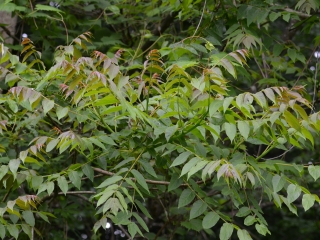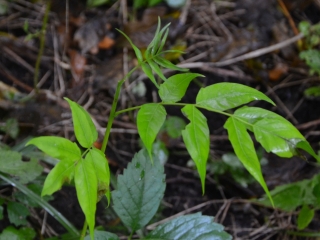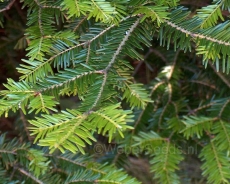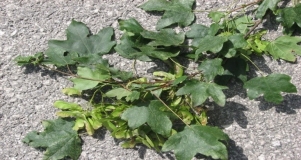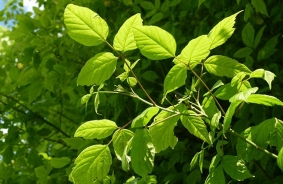Tree of heaven Ailanthus altissima
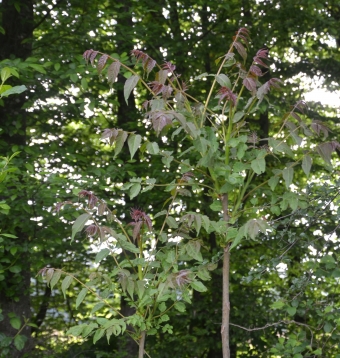
Features
It is a deciduous tree up to 25 m high with a sparse, rounded canopy and a flat, strong trunk with shallow, well-developed roots.
| Species | Trees (Macrofanerophytes) |
| Living space | Rivers, Streams |
| Size | up to 25 m |
Description
Young shoots are thick, reddish-brown and hairy, the bark on the branches light gray, on the trunk thin, relatively smooth and with whitish longitudinal cracks. The buds are small, up to a few mm long, rounded, reddish-brown and covered with 2–4 hairy scaly leaves. The leaves are 50-90 cm long, spirally arranged, lichopernate composed of 11-25 leaflets. The leaves are asymmetrical, 6–12 cm long, 2.5–4 cm wide, stalked, oblong-elliptic, pointed at the top, rounded at the base, entire or with 1–3 blunt cloths. If the leaves are crumpled, they emit a pronounced, unpleasant odor. The flowers are five-membered, small, mostly unisexual (plant dioecious, rarely monoecious), grouped in lactate inflorescences up to 25 cm long; corolla leaves are greenish. The ovary is overgrown, with 3–6 fertile leaves that have grown only in the lower part. The fruits are about 1 cm wide and up to 5 cm long winged nuts. The ripe fruits are light reddish-brown. It thrives best in warm climates, and only young plants are sensitive to (severe) cold. Tree of heaven is suitable for deep and fresh soils, but it also grows on stony and sandy soils. It is a light-loving species of open and bright habitats. It is often found in cities, on ruderal sites, on the edges of houses, along roads, on construction sites, along streams, on embankments, abandoned agricultural land and the like. It grows quickly and luxuriantly, can form impassable stands and at the same time displaces native vegetation. Trees excrete toxins that prevent the establishment of other plant species in the vicinity. Some people are allergic to tree of heavne pollen, and the juice of this plant is thought to cause myocarditis.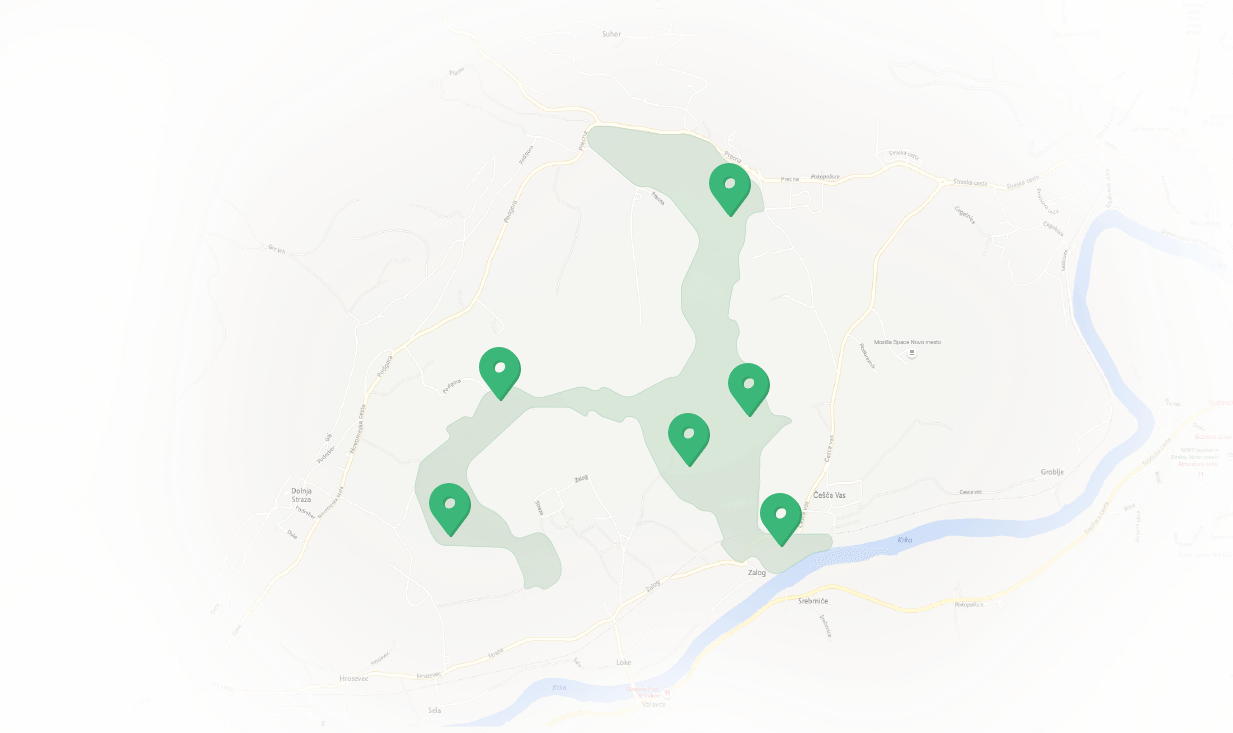
Features Temenica (3)
SPECIAL ogr.

